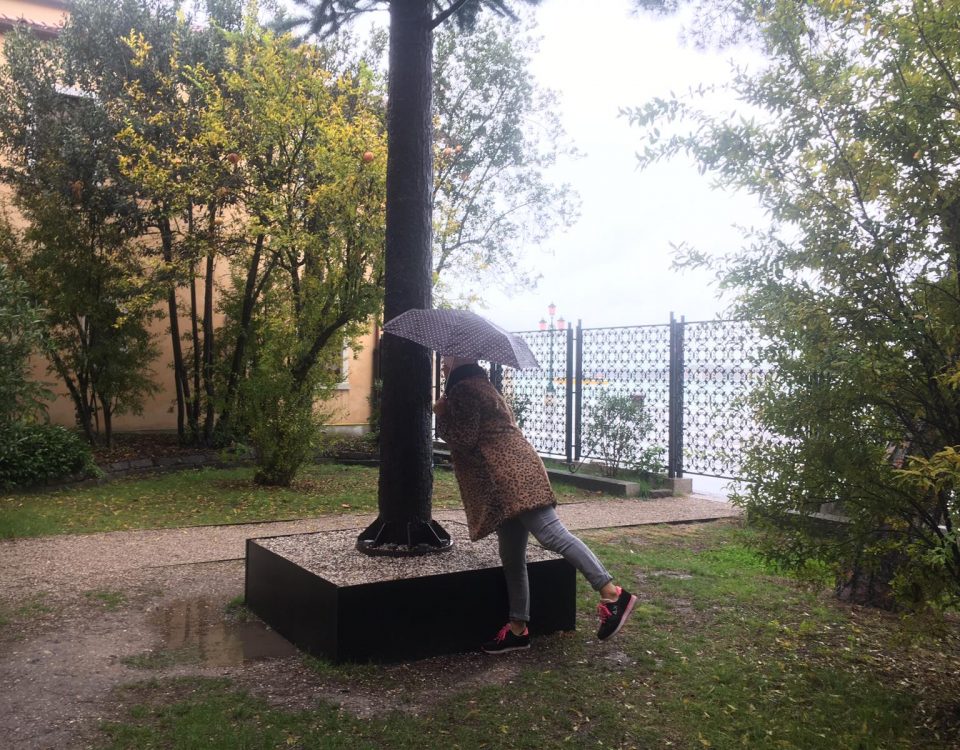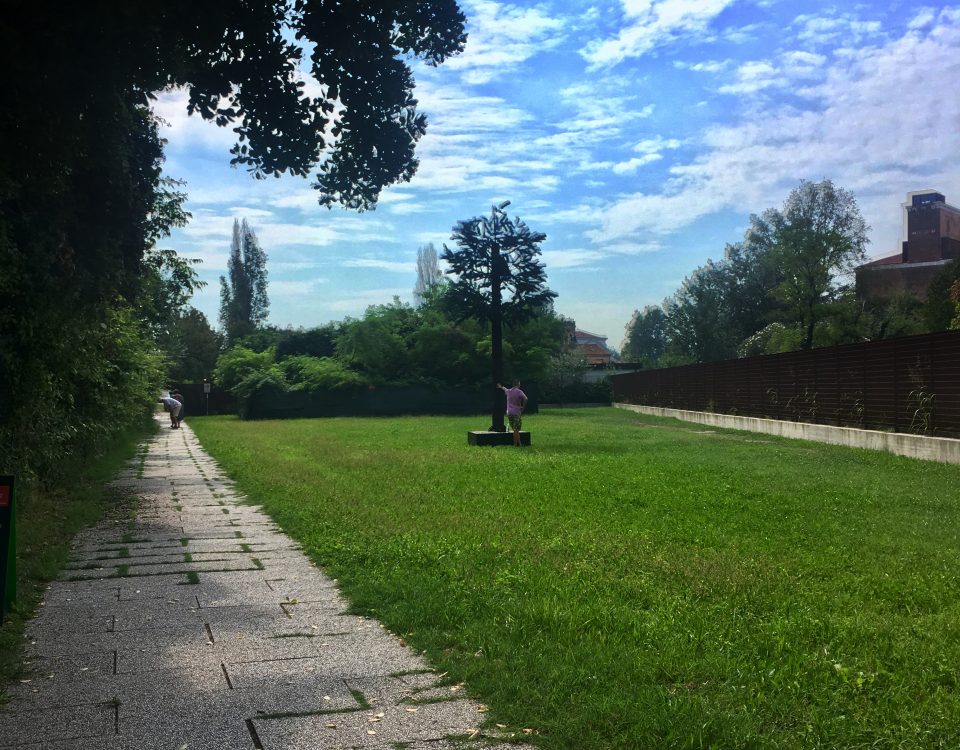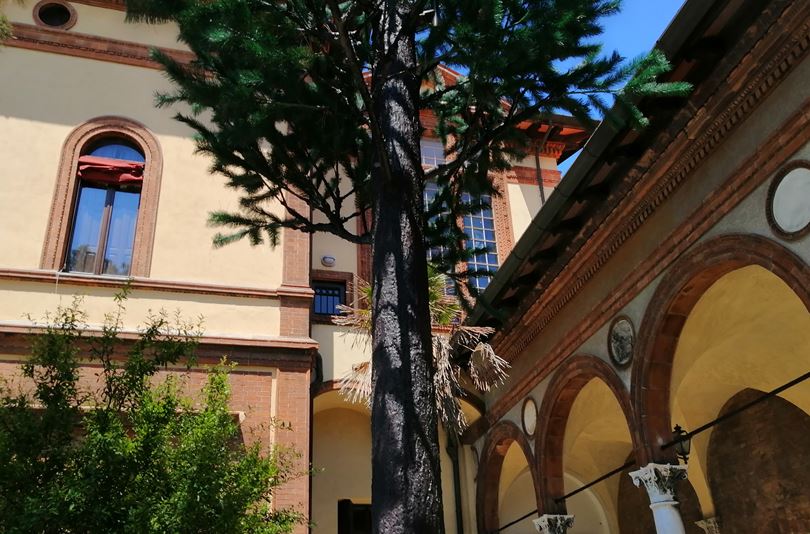
Biennale Arte 2019: New Zealand’s artist and curators announced
November 2, 2017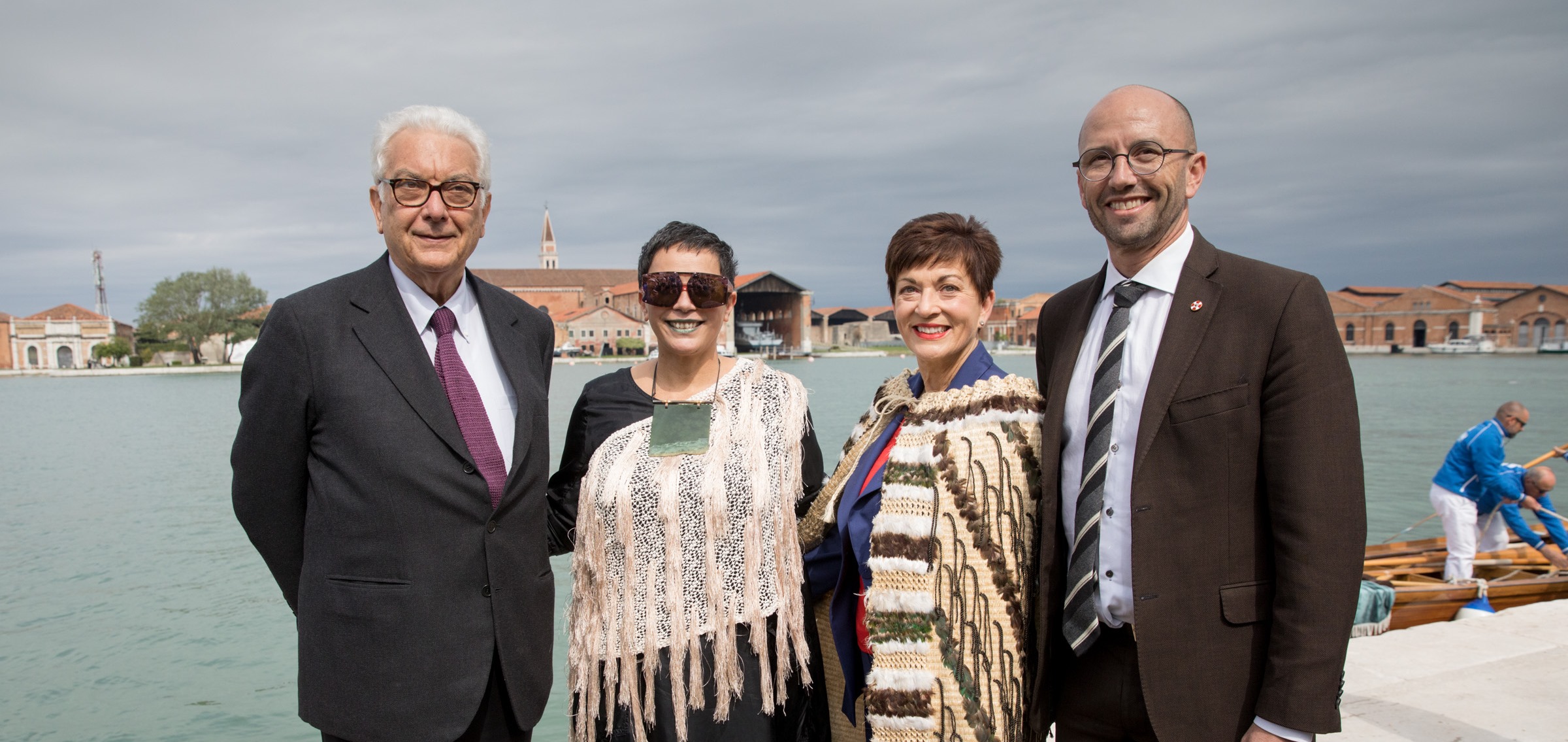
Closing thoughts from 2017 Commissioner Alastair Carruthers
December 6, 2017Panoramania
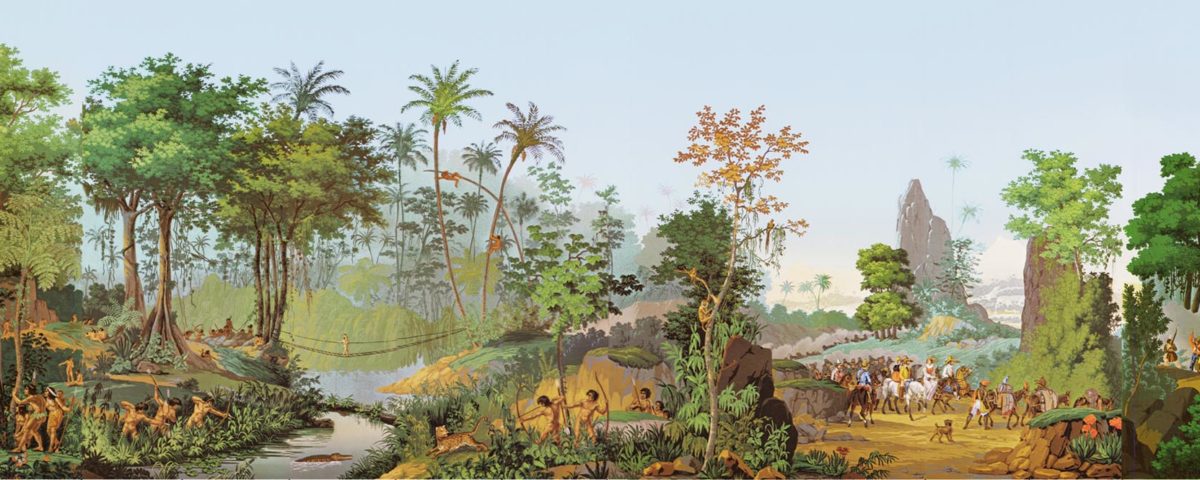
'Les Vues Du Brésil'. Scenics from the Manufacture Zuber, printed with the original woodblocks classified by the French Ministry of Culture.
Hannah Murray, one of our Exhibition Attendants for Lisa Reihana: Emissaries takes us back to the start, looking at panoramic wallpapers in her blog (below).
Lisa Reihana’s cinematic reimaging of Dufour et Cie’s wallpaper Les Sauvages de la mer Pacifique, 1804–5, has left visitors amazed, mesmerized and touched.
Throughout my time at the Biennale, I’ve spoken with a few visitors who have connected with Reihana’s work through their preexisting knowledge of other panoramic wallpapers. These were also produced during the 18th and 19th centuries and subsequently attempted to depict various cultures and nations encountered at the time.
For example, I recently spoke with a visitor from the United States who detailed a wallpaper depicting encounters of North America. Another visitor, from Brazil, told me they had viewed a similar wallpaper that depicted the indigenous people of Brazil (this exchange was a special feat considering we couldn’t speak each other’s languages – Google translate, emphatic body language and smiling were essential tools here).
These conversations sparked my curiosity and led to me research other creations by Dufour et Cie and other wallpaper manufacturers who created works during their boom of great popularity and production. As a little background, Dufour et Cie was a French manufacturing company that produced painted wallpapers and fabrics in the late 18th century. These wallpapers served as semi-educational, semi-ornamental decorations and were designed to sit above the dado (dado is an architecture term referring to the lower section of a wall). Les Sauvages de la mer Pacifique was their best-selling wallpaper and filled the homes of many wealthy clientele.
Below are images of two wallpapers I’ve stumbled upon, both bringing further life to Reihana’s term for Les Sauvages de la Mer Pacifique as a ‘fabulation’.

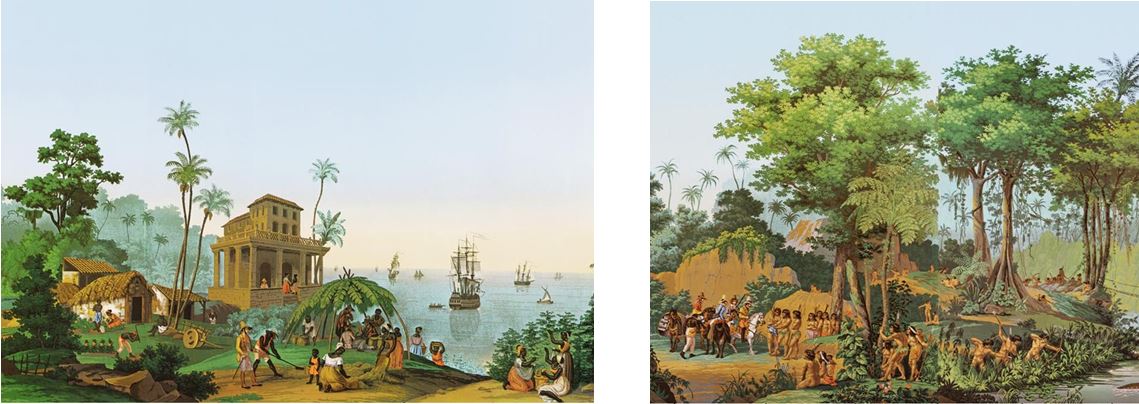
Les Vues Du Brésil. Scenics from the Manufacture Zuber, printed with the original woodblocks classified by the French Ministry of Culture.

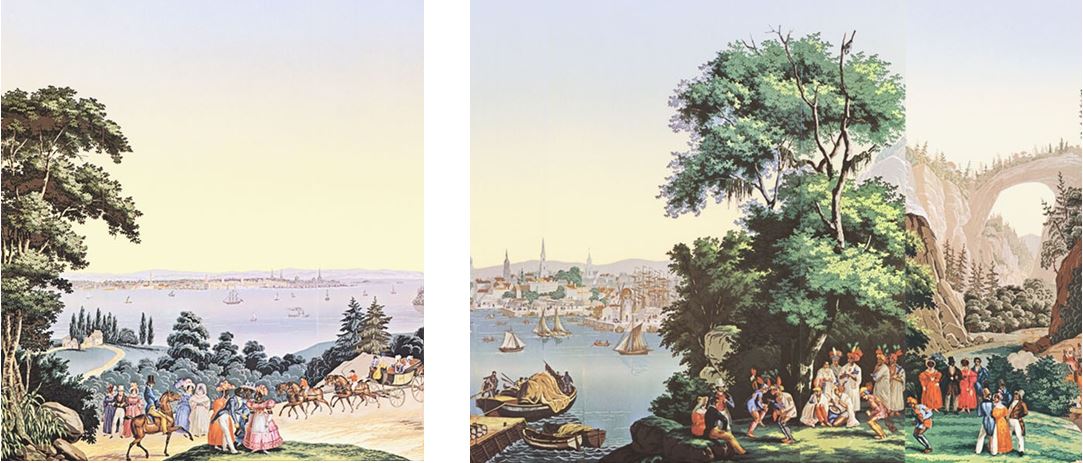
Les Vues de L’Amérique Du Nord. Scenics from the Manufacture Zuber, printed with the original woodblocks classified by the French Ministry of Culture.
I found Zuber et Cie’s Les vues d’Amérique du Nord (Views of North America), 1834, particularly interesting as there are several quite clearly African American figures in European dress in the foreground at a time when slavery was still legal in the US. A recent blog post elaborates:
…they (the wallpapers) were created for the French market more so than the American one, and crafted to portray a perfect American Republic–characterized by the equality, prosperity, and inter-connectivity of all of its citizens–just as French Liberals were trying to create their own ideal Republic. America had to be the model, the way forward, and so things that weren’t so perfect, like slavery, were ‘whitewashed’, as African-Americans are shown freely intermingling with European-Americans, even in depictions of the South.
A number of these wallpapers are still in existence in Europe and the US; an article on historic wallpapers claims there was a revival of this type of decoration in the 1930s in the US. This trend somehow extended to the sixties when Jacquie Kennedy redecorated the Diplomatic Reception Room in the White House and selected Zuber et Cie’s Les vues d’Amérique du Nord, 1834, as a decorative feature. There is an image of Barack and Michelle Obama in 2010 in said room, providing an intriguing view of the legacy of historic representation.

